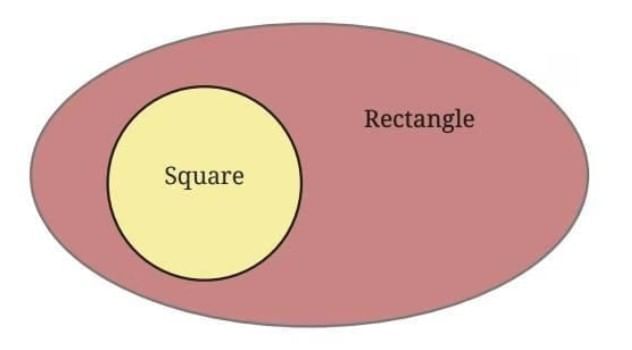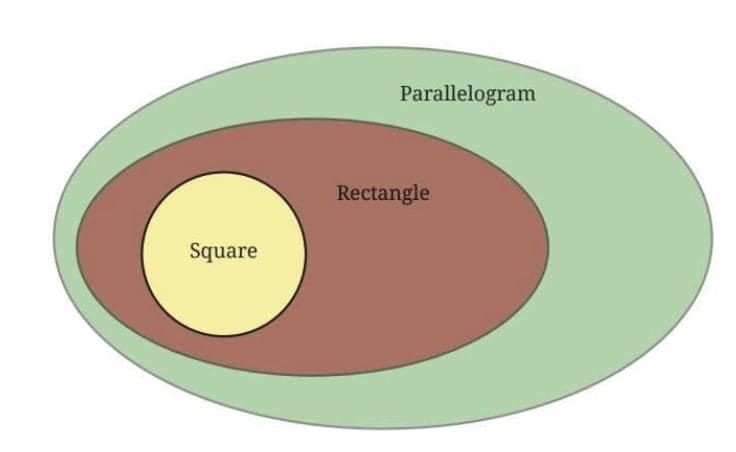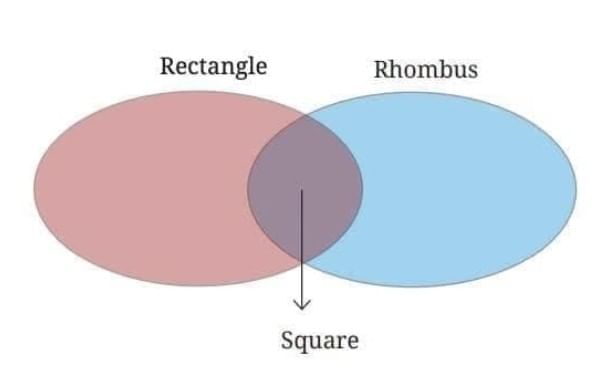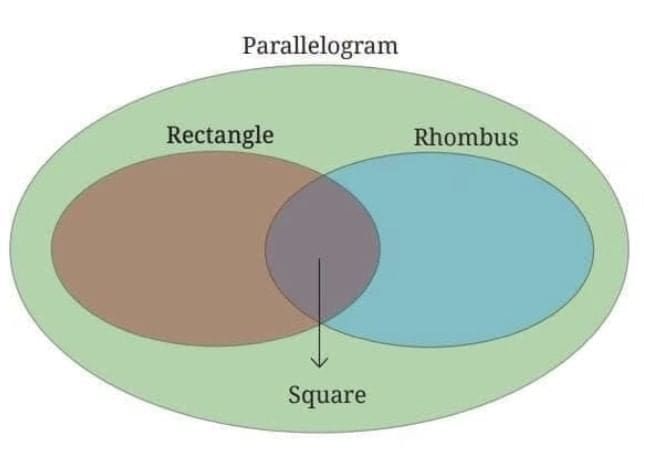Important Formulas: Quadrilaterals | Mathematics Class 8- New NCERT (Ganita Prakash) PDF Download
| Table of contents |

|
| 1. Polygons |

|
| 2. Quadrilateral |

|
| 3. Rectangle |

|
| 4. Square |

|
| 5. Parallelogram |

|
| 6. Rhombus |

|
| 7. Kite |

|
| 8. Trapezium |

|
| 9. Venn Diagram Relationships |

|
1. Polygons
A simple closed curve made up of only line segments is called a polygon.

Regular and Irregular Polygons
A regular polygon is both ‘equiangular’ and ‘equilateral’. So all the sides and angles should be same
(a) So square is a regular polygon, but a rectangle is not
(b) Equilateral triangle is a regular polygon
2. Quadrilateral
Definition: A quadrilateral is a four-sided figure, derived from Latin words "quadri" (four) and "latus" (sides). There are many kinds of quadrilaterals. 
The five most common types are the parallelogram, the rectangle, the square, the trapezoid, and the rhombus.
Angle Property of Quadrilateral
- Sum of all the interior angles is 360º
- Sum of all the exterior angles is 360º
3. Rectangle
Definition: A quadrilateral with all angles equal to 90°.
Properties:
All angles are 90°.
Opposite sides are equal.
Opposite sides are parallel.
Diagonals are equal in length and bisect each other (intersect at their midpoints).
4. Square
Definition: A quadrilateral with all angles equal to 90° and all sides of equal length.

Properties:
All sides are equal.
Opposite sides are parallel.
All angles are 90°.
Diagonals are equal, bisect each other at 90°, and bisect the square’s angles (e.g., ∠ADC is split into two 45° angles).
A square is a special type of rectangle and parallelogram.
5. Parallelogram
Definition: A quadrilateral that has both pairs of opposite sides parallel is called a parallelogram.
Properties:
- The opposite sides of a parallelogram are equal.
- The opposite angles of a parallelogram are equal.
- The diagonals of a parallelogram bisect each other.
- The adjacent angles in a parallelogram are supplementary.

6. Rhombus
Definition: A quadrilateral with all sides of equal length.
Properties:
All sides are equal.
Opposite sides are parallel (a rhombus is a parallelogram).
Adjacent angles sum to 180°, and opposite angles are equal.
Diagonals bisect each other at 90° and bisect the rhombus’s angles.
7. Kite
Definition: It is a quadrilaterals having exactly two distinct consecutive pairs of sides of equal length
Here ABCD is a Kite
Properties:
Two pairs of adjacent sides are equal.
AB=BC
AD=CDOne diagonal (e.g., BD) bisects the other (AC) at 90° and bisects opposite angles (∠ABC, ∠ADC).
8. Trapezium
A quadrilateral which has one pair of opposite sides parallel is called a trapezium.

Properties:
At least one pair of opposite sides is parallel.
In an isosceles trapezium (non-parallel sides equal), angles opposite the equal sides are equal, and base angles sum to 180°.
9. Venn Diagram Relationships
(a) Venn Diagram Showing the Relationship Between a Rectangle and a Square

(b) Venn Diagram Showing Relationship Between Square, Rectangle and Parallelogram.

(c) Venn Diagram Showing Relationship Between Rectangle, Rhombus, and Square

(d) Venn Diagram Showing Relationship Between Rectangle, Rhombus, Parallelogram and Square

|
26 videos|133 docs|11 tests
|
FAQs on Important Formulas: Quadrilaterals - Mathematics Class 8- New NCERT (Ganita Prakash)
| 1. What are the different types of quadrilaterals and their properties? |  |
| 2. How do you calculate the area of different types of quadrilaterals? |  |
| 3. What is the sum of the interior angles of a quadrilateral? |  |
| 4. What are the properties of a parallelogram that distinguish it from other quadrilaterals? |  |
| 5. How do you determine if a quadrilateral is a trapezium? |  |




















